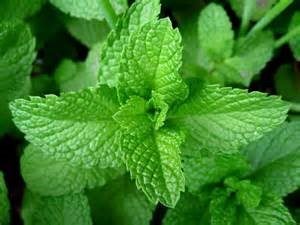Smoothies are all about health, nutrition, and feeling good. For many, it’s a no-brainer to incorporate herbs into their smoothie for flavor and functionality.
While in past centuries herbs were a common feature of medical texts, such has not been the case here in the US since the 19th century. So what follows is simply information about a lovely little plant that grows crazily well, a bit about its family, and how some incorporate it into their daily fare.
Rarely if ever does a recipe specify a type of mint that should be used. Some might think it doesn’t matter but there is a wide variety of scent and flavor within genus mentha which can create endless possibilities.
Mentha is in the lamiaceae family of aromatic plants which includes rosemary, thyme, and sage. Some sources say there are over 600 species of mint, and each has scores of aliases; but what’s growing in your garden is most likely a type of spearmint or peppermint.
There are so many benefits to having this plant in any garden, it attracts pollinators (butterflies to hummingbirds), is a wonderful repellant (insects, mice, deer), and makes a great ground cover. Then you get to drink it, something that can make your stomach really happy.
Mentha Varieties
pipareta (peppermint)
spicata (spearmint)
longifolia (English horsemint, a.k.a wild mint)
canadensus (Japanese mint)
wild mint (mentha canadensus)
suaveolens (apple, pineapple, woolly mint or round-leafed mint)
arvensis (banana, Thai, corn)
x gracilis (gingermint, redmint, Scotchmint, Scotch Spearmint, Golden Apple Mint, Little-leaved Mint)
Among the many benefits attributed to mentha include: easing irritable bowel syndrome, flatulence, diarrhea, nausea, colds, cramps, and most every digestive complaint.
Most are high in antioxidants and have germ fighting capabilities. All provide a cooling sensation and have a stimulating effect.
Peppermint is used to counter morning sickness. Pantry Herb Garden has a long list of mint varieties, primarily variations of peppermint or spearmint. The site provides a wealth of information on the plant’s history, benefits, flavors and growing needs.
The Caveat: all mints can exacerbate acid reflux, or GERD. Sufferers of GERD and IBS can benefit from mint oils when taken in a form with an enteric coating (one that keeps the oils contained during their passage until they reach the bowls). Allergic reactions are also possible.
If you just want the cool kick of mint added to your smoothie, go for the flavor. Pinterest and other sites contain a wealth of recipes to try, maybe tinker with or inspire a new creation. Most recipes aren’t specific so here’s where you can really get creative by introducing your mint of choice.
An appealing smoothie to kick start the day is Healthy Smoothie HQ’s Strawberry Mint Green Smoothie. Now imagine that strawberry-banana-leafy green combination reinforced with banana mint or complemented with basil mint. And which mint could enhance this avocado kefir ginger smoothie – citrus? apple? chocolate? (Seriously, what wouldn’t chocolate enhance??)
Mint tea, mint juleps, and now, mint smoothies. An ideal way to utilize what your garden grows so very well.
SOURCES
The Power of Peppermint. Everyday Health. Accessed 02/13/2016.
Guide to Mint Plants. BHG.com. Accessed 02/08/2016
amzn_assoc_placement = “adunit0”;
amzn_assoc_search_bar = “false”;
amzn_assoc_tracking_id = “trybackfarm-20”;
amzn_assoc_ad_mode = “search”;
amzn_assoc_ad_type = “smart”;
amzn_assoc_marketplace = “amazon”;
amzn_assoc_region = “US”;
amzn_assoc_title = “Items you may enjoy”;
amzn_assoc_default_search_phrase = “smoothie”;
amzn_assoc_default_category = “All”;
amzn_assoc_linkid = “7a8bd5a27e2e774aba4813ab8726761a”;
amzn_assoc_rows = “2”;
Check out these products as well!


